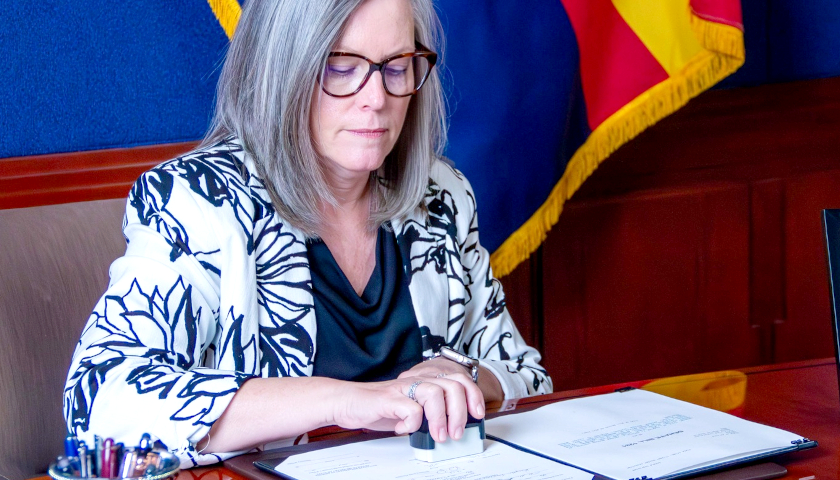Cutting, styling and coloring hair is no small responsibility.
An untrained cosmetologist operating out of her basement can wreak havoc on the public health.
“We have a responsibility to the public that we’re going to be doing this in a safe manner, so that way they’re not going to contract Hepatitis. They don’t have to worry about contracting Staph Infection,” Lindsey LaForest, a cosmetologist at Hair Chiasso! in Maumee, told ABC 13 in Toledo.
Some Ohio lawmakers are questioning, however, if the state’s laws on cosmetology licensing are overly burdensome, making it more costly than necessary for students to get trained. Not to mention the debt: Students can easily graduate from some cosmetology schools with $20,000 or more in loans to pay back.
The current Ohio law requires a cosmetology student to obtain 1,500 hours of course work. By comparison, becoming an EMT requires 150 hours and becoming a real estate agent requires 120 hours.
House Bill 189 would reduce the required number of training hours for a cosmetologist license from 1,500 hours to 1,000.
HB 189 would also require professionals to earn continuing hours of education.
Under current Ohio law, private cosmetology students take 1,500 hours of training while career technical students only take 1,125. Under HB 189, both would take the same 1,000 hours.
The bill is supported by the Ohio chapter of Americans for Prosperity.
The bill, which has bipartisan support, also offers an alternative route to a license through an apprenticeship program.
One of the bill’s co-sponsors, Rep. Kristina Roegner (R-Hudson), says HB 189 is a bipartisan effort to reduce artificial governmental barriers to those seeking careers in the cosmetology industry.
She said the 1,000-hour requirement came about in part based on the following facts:
- A national study across all 50 states showed virtually no difference in graduation and licensure rates. I didn’t understand why the additional 500 hours which prevent the individual from entering the workforce and potentially could drive up their student debt.
- New York and Massachusetts have a requirement of 1,000 hours and they have proven this to be successful. I believe that we should look across our great nation for the best practices whenever we can.
- If becoming an EMT requires 150 hours and becoming a real estate agent requires 120 hours then common sense would tell anyone that 1,000 hours is more than enough training to be a cosmetologist.”
Roegner introduced the bill in June 2017 with co-sponsor Alicia Reece (D-Cincinnati), seeking what they believe are common-sense reforms in the cosmetology industry. In February and March of this year, the Government Accountability and Oversight Committee of the Statehouse listened to testimony both pro and con from cosmetology-industry players.
Roegner stated on the Statehouse website that New York and Massachusetts require 1,000 hours for licensure and other states are moving towards that goal.
“In studying the issue, the representatives found that there is NO correlation between additional hours of education and earnings or the pass rates on exams,” she said. “The only direct correlation with additional hours is increased debt for the private cosmetology student upon graduation.”
Ohio’s salon industry is a significant economic driver. Approximately 3,500 salon establishments employ over 23,000 individuals and generate annual sales of approximately $1.6 billion. It also provides employment and entrepreneurial opportunities to individuals of diverse backgrounds. In Ohio, 47 percent of salons are owned by minorities and 77 percent are owned by women.
“The industry, however, is being held back from reaching its full potential by outdated laws and with overbearing requirements,” Roegner states on her website.
– – –
Anthony Accardi is a writer and reporter for The Ohio Star.





